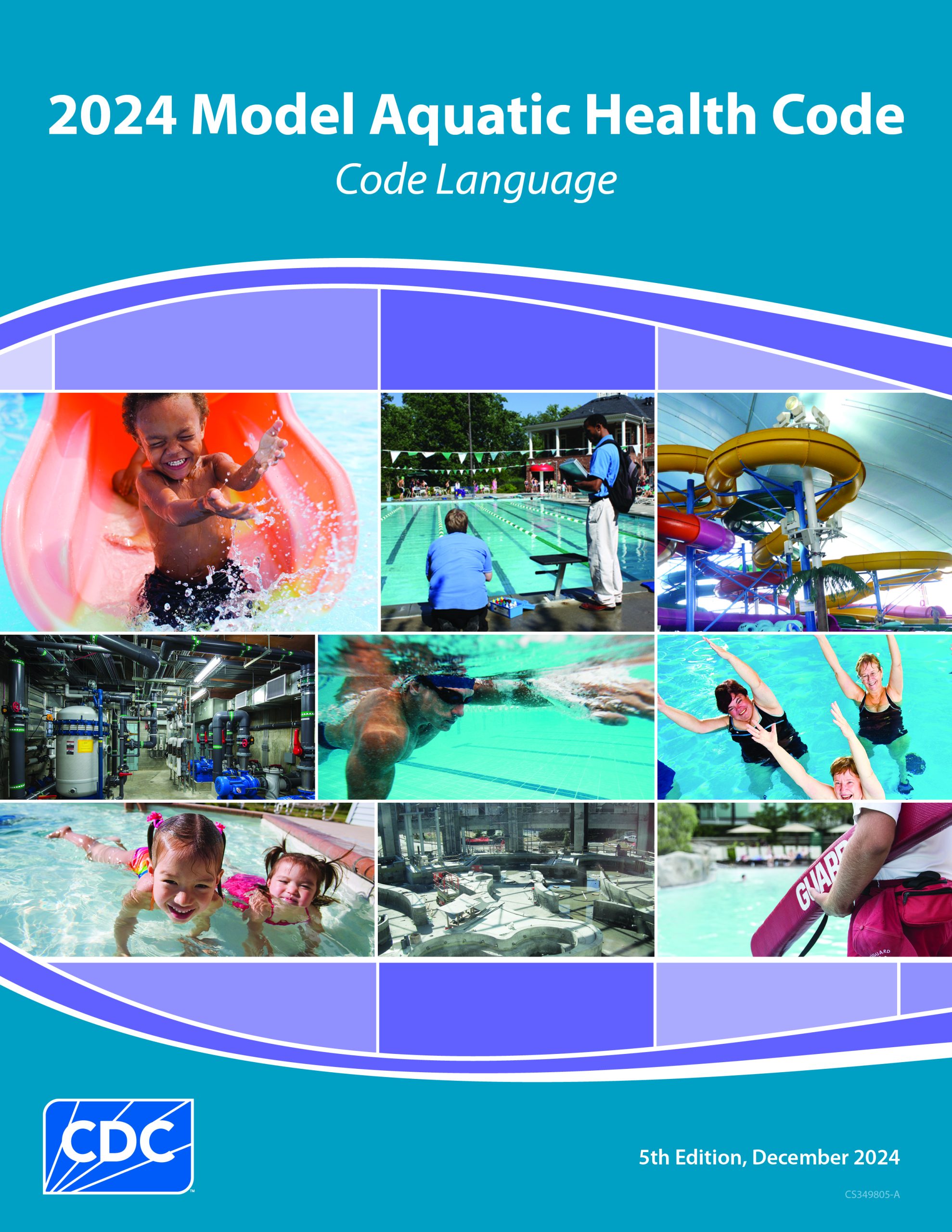At a glance
The most recent version of the Model Aquatic Health Code (MAHC), the 5th edition, was posted in 2024. Links to the document, as well as a list of changes from the previous edition can be found below.

The 2024 Model Aquatic Health Code
2024 MAHC (5th Edition) -- posted 12/16/2024
- 2024 MAHC Code (5th Edition) – 12/16/2024 [204 pages]
- 2024 MAHC Annex (5th Edition) – 12/16/2024 (Revised 02/04/2025) [250 pages]
Key changes found in the 2024 MAHC
This short list is a high-level summary only. Please consult the track changes version of the 2024 MAHC (5th Edition) to review all changes:
- Track Changes version 2024 MAHC Code (5th Edition) – 12/16/2024 [216 pages]
- Track Changes version 2024 MAHC Annex (5th Edition) – 12/16/2024 (Revised 02/02/2025) [270 pages]
Overview of changes
- Chapters 1–3
- Established definition for single pass splash pads, eliminated references to foreign standards, removed references to outdated CPSC standard.
- Chapter 4
- Portable slides are prohibited, as their location is not fixed and the water depth, landing area, and clear spaces are not ensured (MAHC Section, 4.12.2.9.1).
- A clock must now be visible to all spa bathers (4.12.1.12).
- Single pass splash pads included as an interactive water play aquatic venue and subject to applicable MAHC design standards and construction (4.12.8), and facility operation and maintenance requirements (5.12.8).
- Chapter 5
- CDC accepted a CMAHC rejected change request that specified the upper operating range for chlorine products is dictated by the manufacturer's instructions for use, in compliance with the EPA's Federal Insecticide, Fungicide, and Rodenticide Act (FIFRA) (5.7.3.1.1.5).
- Cyanuric acid (CYA) at 300 ppm or higher now requires immediate remediation (5.7.3.1.3.3).
- Chapter 6
- The aquatic venue diarrheal-stool contamination response in the presence of CYA was modified to add dilution credits when draining and refilling to lower the CYA concentration (6.5.3.2.1). A table was also added to display log reductions based on the initial CYA concentration and the percentage of the aquatic venue drained and refilled.
- Three additional health hazards were added requiring immediate closure (6.6.3.1).
1. Failure to provide interlock controls and flow meters/flow switches/pressure switches in accordance with section 4.7.3.2.1.3, or they are not operating properly, or have been disabled or bypassed. 2. Failure to prevent unauthorized access to pool chemical storage spaces. 3. Free chlorine greater than 10 ppm while bathers are present. - Two qualified lifeguards are required to be present and available to respond to aquatic emergencies in aquatic facilities that have a single zone of patron surveillance (6.3.4.3.1).
- Chapter 7
- Artificial swimming lagoons (ASLs) design standards and construction, and operation and maintenance requirements now included as a special venue (7.3 & 7.4).
Change requests for this edition
The MAHC update cycle includes the chance to submit change requests to CMAHC. For the 2024 edition, 202 change requests (CRs) were submitted to the CMAHC. Four were withdrawn. Twelve change requests were identified as editorial in nature by the Editorial Review Committee and were removed from the voting process.
Of the 202 submitted CRs, the CMAHC membership voted to pass 122 (60.4%) CRs. The CMAHC Board of Directors recommendations agreed with CMAHC member voting results on all change requests and submitted the voting results to CDC for consideration.
Correspondence between the CMAHC and CDC on suggested changes to the MAHC is posted below.
- CMAHC voting results letter to CDC for 2024 MAHC (PDF - for print only)
- CDC response to CMAHC voting results for 2024 MAHC (PDF - for print only)
Earlier editions
All previous MAHC editions are replaced by the latest and most current edition of the MAHC and are archived on the Previous MAHC Editions page. All of the information related to the development of the MAHC can be found on the Creating the MAHC page.
